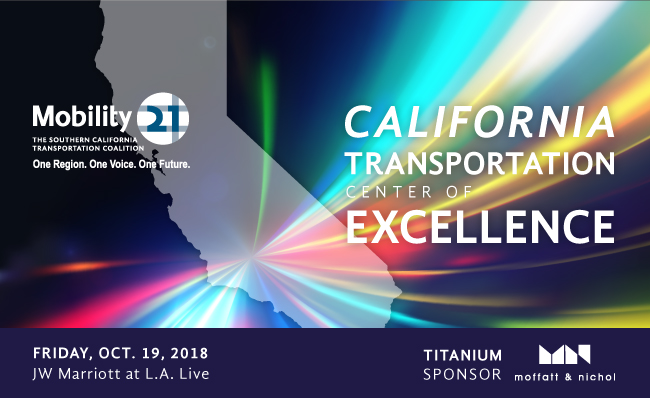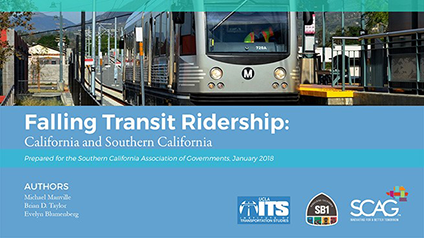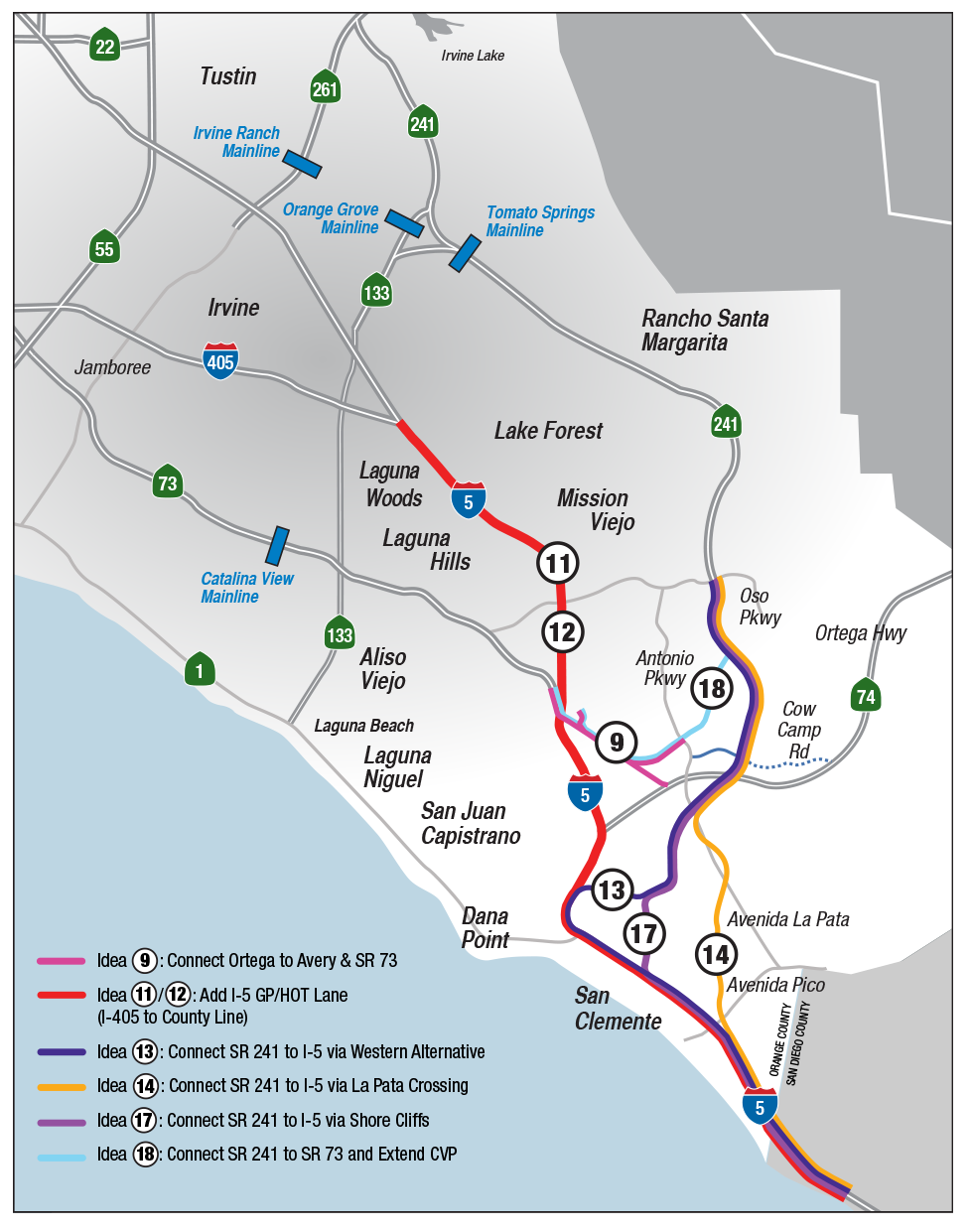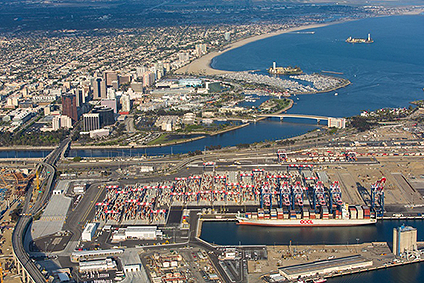2018 Mobility 21 Summit Sponsorships Now Open
 Sponsorships for the 17th annual Southern California Transportation Summit open to the general public tomorrow, March 1! Join us for California’s largest one-day transportation event on Friday, Oct. 19 at the JW Marriott at L.A. Live.
Sponsorships for the 17th annual Southern California Transportation Summit open to the general public tomorrow, March 1! Join us for California’s largest one-day transportation event on Friday, Oct. 19 at the JW Marriott at L.A. Live.
2018 Summit sponsors will experience:
- Access to public and private sector transportation decision-makers
- Visibility at California’s largest one-day transportation Summit and Expo
- Pre-event publicity to transportation sector professionals
- Networking with 1,200+ business partners, clients, elected leaders and speakers
- Value for your investment with highly competitive sponsorship rates
Click here to view the sponsorship packages. E-mail Kristin Slocum for more details or call 949.288.6884.
Mobility 21 to Co-host Reception Honoring California Transportation Commission in Orange County
Please join Mobility 21, Orange County Business Council, OC Moves and Orange County Transportation Authority on Wednesday, March 21 for a reception honoring the California Transportation Commission (CTC).
Wednesday, March 21, 5-7 p.m.
Orange County Transportation Authority Headquarters
Registration: https://2018ctcoc.eventbrite.com
Registration free, space is limited.
Sponsorship
$500: Includes logo on event marketing
$250: (small businesses and nonprofits only): Includes company name on event marketing
Sponsored by:
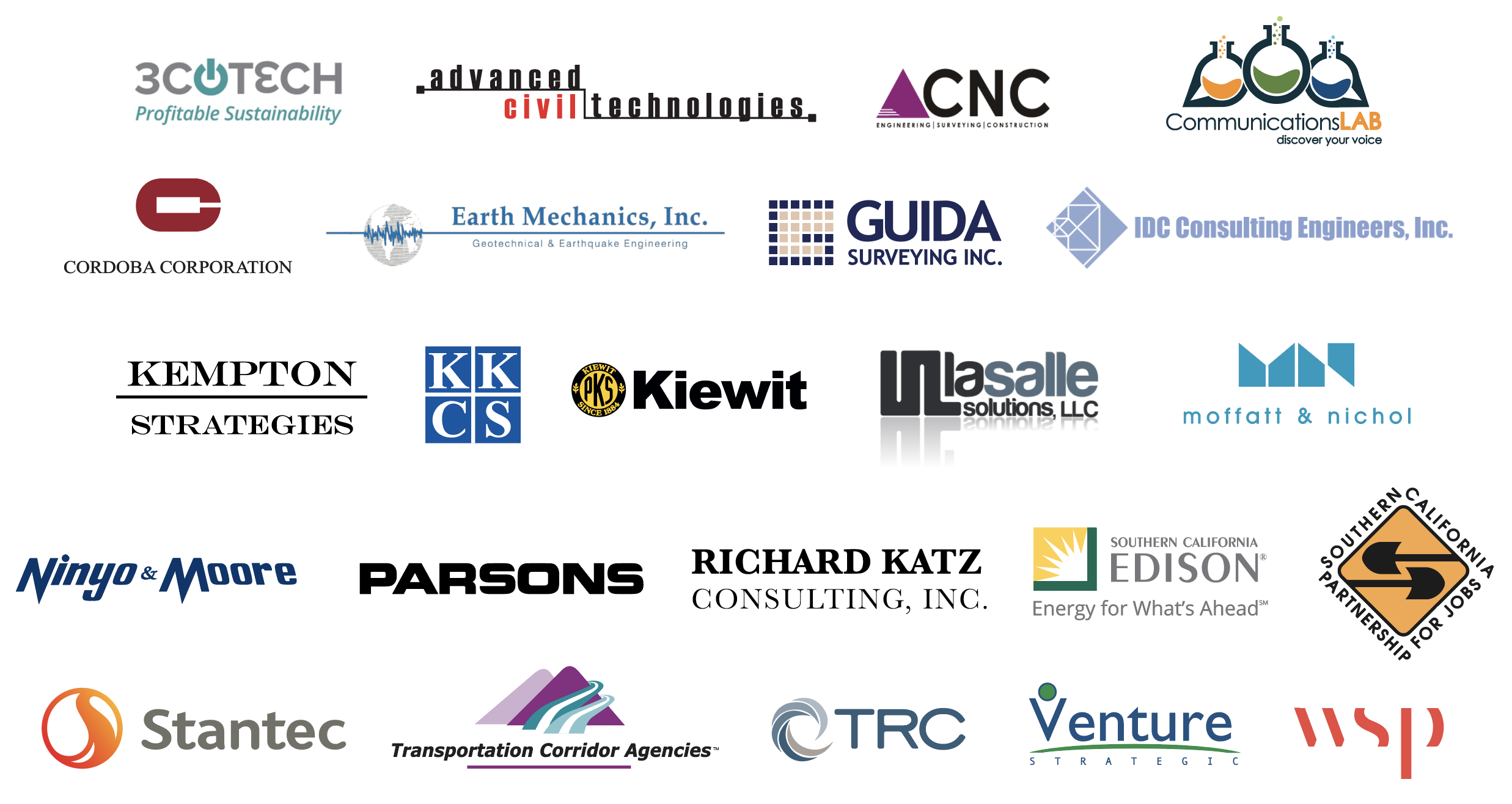
Mobility 21 Advisory Board Member Spotlight:
John Hakel
Executive Director,
Southern California Partnership For Jobs
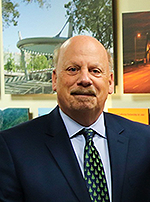
John Hakel is the Executive Director at Southern California Partnership For Jobs, a partnership comprised of 2,750 construction firms who employ more than 90,000 union workers in the 12 counties of Southern California. Their mission is to engage elected officials and educate the public on the need for continued infrastructure funding creating thousands of career constructions jobs in our communities.
He is a member of the Southern California Association of Governments; Inland Empire Economic Partnership; Los Angeles Chamber of Commerce, Orange County Business Council and is currently serving on the Los Angeles Community College District Oversight Committee. Since 2016, John has established personal working relationships with California Transportation Commission, Los Angeles Regional Water Quality Control Board and Riverside County Transportation Commission. He was among the top leaders in the local passage of Measure M (LA County), which created 485,000 jobs and decades of work for the construction industry. His involvement with the passage of the SB1 statewide transportation initiative created $5.2 billion of infrastructure improvements that will provide construction careers for our men and women throughout California for over the next 10 years.
Under John’s leadership, Southern California Partnership for Jobs has grown from a newly established organization to a name that elected officials and the top leaders in the infrastructure world have come to recognize and want to be involved with.
John lives in Downey with his beloved wife Gwen. He has 2 children; Ryan Hakel and his wife Krissy, his first granddaughter Sawyer, and daughter Lauren and her husband John Chambers. When not working, you can find John walking his dogs Trooper and Scout or on the golf course enjoying a good cigar. John’s sense of humor is his trademark quality, one in which anyone who has met him can testify to!
Mobility 21 Advisory Board Member Spotlight:
Dr. Allison Yoh
Director of Transportation Planning,
Port of Long Beach
 Dr. Allison Yoh is Director of the Transportation Planning Division in the Planning and Environmental Affairs Bureau at the Port of Long Beach. She began her Port career in June 2013 as a transportation policy specialist, was promoted to manager in February 2015, and named division director in March 2016.
Dr. Allison Yoh is Director of the Transportation Planning Division in the Planning and Environmental Affairs Bureau at the Port of Long Beach. She began her Port career in June 2013 as a transportation policy specialist, was promoted to manager in February 2015, and named division director in March 2016.
As director, she leads the review and analysis of transportation-related policies; conducts regulatory and legislative analysis; provides expertise in developing regional, state and national transportation policy; oversees Port transportation planning studies; assists with managing Port-related traffic in support of Supply Chain Optimization efforts; seeks and administers grants and other funding, and represents the Port on transportation-related matters before various audiences at public meetings, including local, regional and statewide stakeholder groups.
Prior to joining the Port, Dr. Yoh was associate director for the Institute of Transportation Studies, and for the Lewis Center for Regional Policy Studies, at the University of California, Los Angeles, where she co-directed the two research centers focusing on transportation policy.
Earlier in her career, Dr. Yoh was an adjunct researcher at the RAND Corporation in Santa Monica and served as a mayoral appointee to the board of directors of the Los Angeles County Metropolitan Transportation Authority (Metro). She has also served as an advisory member for the Los Angeles County Measure R Oversight Committee and on the Mayor’s Transportation Task Force on Congestion for the City of Los Angeles.
She holds a Doctor of Philosophy and a Master of Arts degrees in Urban Planning, both from the University of California, Los Angeles. She also earned a Bachelor of Arts degree in Anthropology from the University of California, Berkeley.
Dr. Yoh has published numerous peer-reviewed articles, authored professional reports and delivered presentations on subjects including the effects of wait time on public transit travelers, the adoption of smart technologies for transit fare policy innovations, and green planning for bicycles at the Port. She is a member of the Ports and Channels Committee of the Transportation Research Board of the National Academies of Science.
Long Beach Councilwoman and Vice Mayor Suja Lowenthal presented Dr. Yoh with a Steward of the 2nd District award in 2015.
Frequently called on by the news media for her expert opinion, her quotes have been included in the Los Angeles Times, La Opinion, LA Weekly, CityBeat and others. Her televised interviews include appearances on Canadian Broadcast Corporation (CBC) World News, The Today Show on NBC, NBC Nightly News and other local television media.
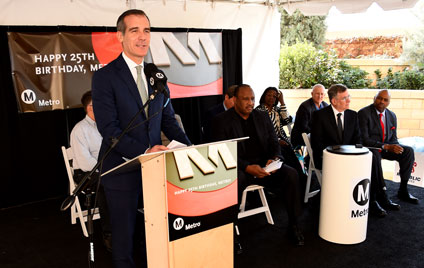
Los Angeles Mayor and Metro Board Chair Eric Garcetti speaks during a special 25th anniversary commemoration event.
Metro Celebrates a Quarter Century of Progress to
Transform Transportation in Los Angeles County
Last month, the Los Angeles County Metropolitan Transportation Authority (Metro) celebrated the 25th anniversary of its formation and noted key milestones that have dramatically improved transportation options for L.A. County’s nearly 10 million residents.
Current and former board members, elected leaders and community stakeholders joined Los Angeles Mayor and Metro Board Chair Eric Garcetti at Union Station to commemorate the agency’s official birthday. Metro was first created under state law on Feb. 1, 1993 through the merger of two regional transportation agencies: the Southern California Rapid Transit District, operator of the region’s largest bus system, and the Los Angeles County Transportation Commission, the region’s principal transportation planning and funding agency. The merger created a mega-transportation agency tasked with a unique yet comprehensive mandate: plan, coordinate, design, build and operate transportation services for L.A. County.
Significant Metro milestones over the last two and a half decades include: buiding five new rail lines consisting of 82 additional miles of Metro Rail service; launching 22 highly successful Bus Rapid Transit Lines, including the Metro Orange Line and Metro Silver Line; converting all agency diesel buses to run on clean natural gas; obtaining voter approval of two new sales tax initiatives to fund local transportation improvements; improving mobility on the I-10 and 110 freeways by adding ExpessLanes; launching an Office of Extraordinary Innovation to find and test new mobility ideas; funding improvements for key bicycle and pedestrian connections, and much more.
“Today, we celebrate 25 years of a world-class transportation agency,” said Los Angeles Mayor and Metro Board Chair Eric Garcetti. “With the passage of Measure M – the boldest, most comprehensive transportation investment in American history – Metro is well-positioned to make the next 25 years even more remarkable than the last.”
Back in February ‘93, the Metro system consisted almost entirely of buses. Only the 22-mile Metro Blue Line, which opened in 1990, and the Metro Red Line’s first 4.4-mile segment from Union Station to Westlake/MacArthur Park operated at that time. Southern California’s Metrolink commuter rail network launched the previous year in 1992.
Metro now operates 2,438 buses on 170 bus routes crisscrossing L.A. County. It also operates four light rail and two subway lines totaling 105 miles of service. Metro and its construction partners are now building four additional rail lines or rail extensions, re-imaging and restructuring Metro Bus lines, improving system safety and security, and funding repair and maintenance to keep its transit assets in good working condition for the next generation of Metro riders.
“I am the last of the original Metro Board members that were sworn in 1993,” said City of Duarte Mayor John Fasana. “I am both astonished and proud of the numerous accomplishments this agency has achieved over the years in bringing new multi-modal transportation improvements to L.A. County. Our progress to date has been remarkable. It is also a testament to all of the Board’s current and former members, and the Metro staff, who have persevered in implementing a unified, long-term mobility vision to improve the quality of life for Los Angeles County residents.”
Since its formation in 1993, the agency has had a total of seven chief executive officers: Franklin White, Joseph Drew, Linda Bohlinger, Julian Burke, Roger Snoble, Arthur T. Leahy and Phil Washington. Washington, Metro’s current CEO, came to Metro from Denver’s Regional Transportation District in 2015 and has launched a new era in the agency’s transit expansion following the 2016 voter approval of the Measure M Traffic Improvement Plan.
“At 25, we are only just beginning L.A. County’s transportation renaissance,” said Washington. “When I came to Metro, I wanted to make Los Angeles’ public transportation system the best in the world. We are now making rapid progress toward that goal. Measure M will change the face of Southern California and help us create an infrastructure inheritance for our children and grandchildren.”
Without SB 1, Riverside County Projects,
Road Maintenance, Jobs Are in Jeopardy

The Riverside County Transportation Commission voted Jan. 25 by a 19-3 vote to oppose the repeal of Senate Bill 1 (SB 1), which will provide more than $113 million annually to Riverside County for road maintenance, public transit and local priority transportation projects. SB 1 also provides opportunities for Riverside County to compete for funds to reduce highway congestion, build infrastructure to support trade and commerce, and expand rail and bus services. The new funds are generated through increased taxes on motor fuels and vehicle fees, which took effect last November.
SB 1 funds have already been committed to Riverside County. Each city and the County of Riverside receives an annual sum of SB 1 funds to repair and maintain local roads. City councils and the Board of Supervisors review and approve funded projects in public meetings and are disclosed at this website. In general, Riverside County jurisdictions will see their budgets nearly double for filling potholes and fixing local streets.
Estimated Annual Local Street/Road Funding, Riverside County Cities:


The Commission also voted to support Proposition 69 (also known as Assembly Constitutional Amendment 5) to protect SB 1 revenues. If voters approve Prop. 69 in the June Primary Election, the Legislature and Governor would be prohibited from borrowing or diverting SB 1 funds. The Commission has previously supported numerous similar measures to restrict expenditure of transportation revenues to transportation purposes only.
It is no secret that Riverside County roads are in need of repair and are heavily congested, adding time and cost burdens to Riverside County residents and businesses. According to RCTC’s 2016 Strategic Assessment, Riverside County faces a gap between transportation needs and available funding of approximately $12.6 billion through 2039. If SB 1 is repealed, the funding gap will widen to at least $15.8 billion in this same period. Further, Measure A, the voter-approved half-cent sales tax for transportation improvements in Riverside County, relies on adequate state and federal funding to match Measure A funds. SB 1 represents a substantial amount of state funds needed to fulfill Measure A’s commitments to Riverside County voters.
Efforts are underway to gather signatures to place an initiative on the November 2018 ballot to repeal SB 1 and require the Legislature to submit to voters any increase in vehicle fees or gas or diesel taxes.
Several RCTC Commissioners expressed reservations about taxes and skepticism of state government. Commissioners also voiced the growing need for funds to make transportation improvements in local communities. Others said that voters should have a say in whether gas taxes should be raised.
For information about SB 1, click here.
A recent study released by SCAG in partnership with the UCLA Institute of Transportation Studies investigates falling transit ridership in the Southern California region.
Falling Transit Ridership:
California and Southern California
The Southern California Association of Governments (SCAG) recently released a study that investigates why transit ridership has been declining in the Southern California region, even on major bus and rail routes serving the urban core where transit service and ridership has traditionally been the strongest. Partnering with the UCLA Institute of Transportation Studies, the study revealed that the primary cause has been a dramatic increase in private automobile ownership in Southern California, with 2.1 million vehicles added to the region between 2000 and 2015, paralleled by an almost equal increase in population.
The study found that vehicle ownership grew disproportionately among those that are most likely to take transit. The increase in vehicle ownership identified in the report is also contributing to dramatic increases in vehicle miles traveled and congestion delays across the Southern California region.
Though the study explored other factors that could be linked to falling ridership including transit service quality and reliability, fuel prices, neighborhood change, and the rise of ride-hailing services like Uber and Lyft, the resounding factor affecting decrease in transit ridership is in the increased stock of private vehicles in the region. Most significantly, car ownership increased among populations that are more likely to take transit such as lower-income and foreign-born households. The report suggests that instead of trying to recapture low-income riders, the best way to compensate for falling transit ridership is to encourage the large part of the population that uses transit rarely or not at all to take just one transit trip every two weeks.
The full report is available in SCAG’s online document library: http://www.scag.ca.gov/Documents/ITS_SCAG_Transit_Ridership.pdf.
Click on the maps to view full-size.
TCA to Study Eight Ideas to
Address South County Mobility
The Transportation Corridor Agencies (TCA) are committed to ongoing discussions with the community, stakeholders, environmental organizations, and elected officials to identify balanced solutions that will relieve traffic congestion on I-5 through South Orange County.
Through a comprehensive public outreach process, the South Orange County Traffic Relief Effort is bringing forward eight ideas for preliminary analysis in the Project Study Report (PSR).
- Connecting Ortega Highway and Antonio Parkway to Avery Parkway and State Route 73 (SR-73)
- Adding a general purpose lane on Interstate 5 (I-5) from I-405 to the Orange/San Diego County line
- Adding a managed lane on I-5 from I-405 to the Orange/San Diego County line
- Connecting SR-241 to I-5 via Western Alignment (La Novia Avenue)
- Connecting SR-241 to I-5 via Avenida La Pata Crossing
- Connecting SR-241 to I-5 via Shore Cliffs (Avenida Vaquero)
- Connecting SR-241 to SR-73 and extending Crown Valley Parkway to SR-241
- Extending Los Patrones Parkway from Cow Camp Road to Avenida La Pata and adding managed lanes in the median of I-5 from SR-73 to the Orange/San Diego County line
Each idea was developed through public input and planners and engineers, with the goal of finding the best alternative to traffic relief in Orange County. In response to concerns expressed by the community, the eighth idea was announced at TCA’s Joint Board of Directors meeting in February, Completing the PSR, expected in summer 2018, is the first step to initiating the formal environmental process. The eight ideas will be further analyzed in the areas of traffic, right-of-way impacts and other environmental studies.
A public scoping meeting and a public review period will be part of the formal environmental process, for more information visit TheTollRoads.com. The formal environmental process is projected to be complete in 2025.
In 2017, cargo volumes at the Port of Los Angeles reached record highs while emissions were lower than the 2005 baseline. Photo courtesy of the Port of Los Angeles.
An Orient Overseas Container Line (OOCL) ship is docked at Long Beach Container Terminal – a nearly all electric and zero emissions facility – at the Port of Long Beach’s Pier E. Photo courtesy of the Port of Long Beach.
San Pedro Bay Ports Implementing
Bold New Clean Air Strategies
The governing boards of the ports of Los Angeles and Long Beach in November 2017 unanimously approved the 2017 Clean Air Action Plan (CAAP) Update, ushering in a new era of aggressive clean air strategies for moving cargo through the nation’s busiest container port complex. The document provides high-level guidance for accelerating progress toward a zero-emission future while protecting and strengthening the ports’ competitive position in the global economy.
“The San Pedro Bay ports are the driving forces of our region’s economy — and they should also be global models for sustainability and clean air,” said Los Angeles Mayor Eric Garcetti. “This update to the Clean Air Action Plan is an important step toward our ambitious goal of zero-emissions landside goods movement by 2035, and I look forward to making even more progress with our partners in the months and years to come.”
“These new policies and strategies are some of the most progressive air quality rules in the nation,” said Long Beach Mayor Robert Garcia. “We are serious about fighting climate change, protecting local residents, and promoting economic success at our ports.”
Approval of the update set in motion the process for developing and refining specific programs. The strategies include:
- Identifying clean engine milestones for new trucks entering the port drayage registries and creating a rate structure and incentives that encourage faster turnover to near-zero and zero-emission trucks, with the goal of transitioning to a zero-emission on-road drayage fleet by 2035.
- Developing a universal truck reservation system, staging yards, intelligent transportation systems and other efficiency programs to reduce emissions while improving the flow of cargo.
- Beginning in 2020, requiring terminal operators to deploy zero-emission equipment, if feasible, or the cleanest equipment available when procuring new cargo-handling equipment, with the goal of transitioning all terminal equipment to zero emissions by 2030.
- Developing infrastructure plans to support terminal equipment electrification, alternative fuels and other energy resource goals.
- Expanding use of on-dock rail, with the long-term goal of moving 50 percent of all cargo leaving the ports by rail.
As the detailed implementation programs are developed, they will be brought to each port’s harbor commission for approval, starting in 2018.
Meanwhile, the first CAAP Stakeholder Implementation Advisory Group meeting will be held 10 a.m. to noon, March 29, 2018, at the Port of Long Beach headquarters, 4801 Airport Plaza Drive, Long Beach, 90815.
Targets for reducing greenhouse gases (GHGs) from port-related sources to combat global warming and climate change are a new element of the 2017 CAAP. The document calls for the ports to reduce GHGs 40 percent below 1990 levels by 2030 and 80 percent below 1990 levels by 2050.
The GHG targets add to the ports’ existing goals for reducing diesel particulate matter (DPM), nitrogen oxides (NOx) and sulfur oxides (SOx). By 2023, the ports aim to cut emissions of DPM 77 percent, NOx 59 percent, and SOx 93 percent below 2005 levels. Intensifying efforts to reduce GHGs is expected to further lower DPM, NOx and SOx emissions.
Building on the dramatic clean air gains achieved since the ports adopted the CAAP in 2006, the 2017 CAAP is a comprehensive plan for pursuing the ultimate goal of eliminating all harmful air emissions from port-related sources: ships, trucks, cargo handling equipment, locomotives and harbor craft. The document identifies four categories of coordinated strategies: 1) clean vehicles, equipment technology and fuels; 2) infrastructure investment and planning; 3) operational efficiency throughout the supply chain; and 4) energy resource planning.
In addition to incorporating regional, state and federal standards and regulations, the 2017 CAAP integrates aggressive joint zero-emission initiatives the two mayors announced in June. The initiatives include new investments in clean technology, expanded use of alternatives for reducing at-berth ship emissions, and a demonstration of up to 100 zero-emission trucks in the next few years.
The estimated cost of implementing the 2017 CAAP ranges from $7 billion to $14 billion. Given the pioneering nature of the ports’ objectives, the update relies on a framework to assess the feasibility of new technologies — to determine workability and affordability, and to demonstrate the adequacy of supporting infrastructure. The document also reaffirms the ports’ commitment to nurturing a vibrant workforce as we transition to zero-emission technologies for the goods movement industry.
The new strategies were developed with more than two years of dialogue with industry, environmental groups, regulatory agencies, local residents, equipment and fuel vendors, technology developers and others. Because stakeholder input will be crucial going forward, the document creates a CAAP Implementation Stakeholder Advisory Group of public and private experts to provide input on implementing new strategies. The group’s meetings will be open to all who wish to attend.
“Collaboration will be critical to our success,” said Long Beach Harbor Commission President Lou Anne Bynum. “Moving the needle to zero requires all of us — the ports, industry, regulatory agencies, environmental groups and our communities — to pool our energy, expertise and resources.”
“Intensifying our advocacy efforts is also a priority,” said Ambassador Vilma Martinez, President of the Port of Los Angeles Board of Harbor Commissioners. “The new plan reflects our commitment to doing everything in our power to push for funding, support research and demonstration projects, and expand our involvement in the regulatory process to advance our shared environmental and economic objectives.”
Recent air emissions inventories show the ports have surpassed the 2023 pollution reduction goals for DPM (87 percent) and SOx (97 percent) and are close to reaching their goal for reducing NOx (56 percent). They also show emissions are declining while cargo volumes are rising, confirming the ports are growing green. The combined port complex is on pace in 2017 for the busiest year ever.
The ports plan to expand their Technology Advancement Program (TAP) to include technologies and approaches that help meet their new goals for reducing GHGs. TAP has been highly successful in demonstrating cutting-edge emissions reduction technology, with many projects resulting in commercial deployment throughout the complex today.
The Port of Los Angeles and Port of Long Beach are the two largest ports in the nation, first and second respectively, and combined are the ninth-largest port complex in the world. The two ports handle approximately 40 percent of the nation’s total containerized import traffic and 25 percent of its total exports. Trade that flows through the San Pedro Bay ports complex generates more than 3 million jobs nationwide.
Mobility 21 wants to hear from you
If you have ideas for future Mobility 21 Forward Motion articles, send them to Kristin Slocum at
kslocum@mobility21.com

